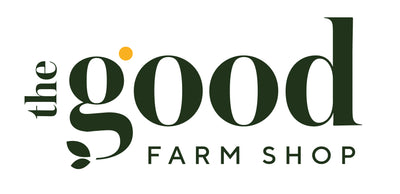Why is Regenerative and Organic Food More Expensive?
Dear valued reader,
In recent years, there has been a growing awareness and demand for organic and regenerative ingredients in our food, beauty products, and beyond. While these ingredients offer numerous benefits for both our health and the environment, they often come with a higher price tag compared to conventional alternatives. But why is this the case?

(The conventional feedlot system)
1. Sustainable Practices: Organic and regenerative farming practices prioritise sustainability and environmental stewardship. This often involves more labour-intensive methods such as crop rotation, composting, and natural pest control. These practices require additional time, effort, and resources, contributing to higher production costs.
2. Certification Processes: Obtaining organic or regenerative certifications involves rigorous standards and inspections to ensure compliance with sustainable practices. The certification process adds administrative costs for producers, which are reflected in the final price of the products.
3. Reduced Yields: Organic and regenerative farming typically yield lower outputs compared to conventional methods. This can be due to factors such as avoiding synthetic fertilisers and pesticides, which may result in decreased crop protection and lower yields per acre. Consequently, producers need to charge more for their products to offset the lower productivity.
4. Supply Chain Challenges: The supply chain for organic and regenerative ingredients is often more complex and fragmented than conventional supply chains. Limited availability of certified organic or regenerative ingredients can drive up costs as producers compete for limited resources.
5. Long-Term Benefits: While the upfront costs of organic and regenerative ingredients may be higher, they offer long-term benefits for both consumers and the environment. These benefits include improved soil health, reduced chemical exposure, and support for biodiversity. Investing in these practices now can lead to more sustainable and resilient agricultural systems in the future.

(the regenerative / organic system)
6. Consumer Demand: As consumer demand for organic and regenerative products continues to rise, economies of scale may eventually lead to cost reductions. However, until these practices become more widespread and mainstream, the higher costs associated with organic and regenerative ingredients are likely to persist.
While the higher price of organic and regenerative ingredients may pose a challenge for some consumers, it's essential to recognise the value they provide in terms of sustainability, health, and environmental impact. By understanding the factors driving these costs, we can make more informed choices that support a more sustainable and equitable food and product system.
Thank you for joining us in exploring this important topic. We hope this newsletter has provided valuable insights into why organic and regenerative ingredients cost more. As always, we welcome your feedback and encourage you to continue supporting sustainable practices in your everyday choices.









Leave a comment